Origin
10+ years of research
The story of our company, Thync, started in 2011 with a powerful founding team of neuroscientists, engineers, and entrepreneurs. After years of research, our team showed that we could use non-invasive brain stimulation to produce a positive effect on the autonomic nervous system. Detailed research across thousands of subjects and over one thousand neurostimulation programs proved that we are on the right path.
Since then, we successfully brought to market our 1st and 2nd generation products: Thync Edition 1 and Relax Pro.
What we realized is that neurostimulation has to be easy-to-use in order to truly help people. Our scientists and engineers worked hard to achieve this goal and came up with the FeelZing Energy Patch — a device that showed significant results in improving people’s energy and focus levels, and was a simple way to deliver our benefits to our customers.
How it works
FeelZing uses a form of neurostimulation called transcutaneous peripheral nerve stimulation (tPNS)

Dr. Jonathan Charlesworth, PhD
Head of Clinical Sciences, Noctrix Health
“We discovered that patterned, high frequency, high amplitude electrical stimulation via the cranial nerves is the most effective and comfortable way to increase your focus and alertness”
Autonomic nervous system balance
FeelZing works by sending a patterned electric waveform to the nerves of the autonomic nervous system, creating the optimal state for productivity: calm alertness.
For this optimal state, we need our autonomic nervous system to up-regulate and balance our sympathetic and parasympathetic nervous systems.

Without ANS balance, we’re cracked out or lethargic

The sympathetic nervous system (colloquially: “fight or flight”) creates alertness and action by increasing heart rate, respiration, and releasing adrenaline.
With too much activity in the sympathetic nervous system, we feel stressed, agitated, and anxious.

The parasympathetic nervous system (colloquially: “rest and digest”) creates calm and recovery by slowing heart rate, respiration, and triggering functions like digestion.
With too much activity in the parasympathetic nervous system, we feel lethargic and apathetic.
FeelZing restores balance so you can be productive
Based on the literature of peripheral nerve stimulation, Thync’s scientists developed a unique high-frequency and high-amplitude waveform to most effectively stimulate nerves connected to your autonomic nervous system.
The FeelZing patch is placed behind the ear on the mastoid. This area contains important nerve connections to the sympathetic nervous system (i.e. greater auricular and lesser occipital nerves) and parasympathetic nervous system (i.e. the vagus nerve).
Stimulation of these nerves together creates an optimal state of balance in the autonomic nervous system, resulting in a calm, energized state — without jitters or anxiety.
Apple Ex-Engineer, Wing Law, working on FeelZing patch components




Neurostimulation research
Research
FeelZing increased energy for 84% of users
In a double-blind, placebo controlled study, 84% of subjects reported a moderate or strong increase in energy levels when using FeelZing.

CUSTOMER RESEARCH
Customers claimed a positive effect on their mental health
In a 2019 survey, the following benefits were mentioned by 90% of patches users: greater alertness, attentiveness, and focus, increased motivation and productivity, and reduced mental and physical fatigue.
Highlights from other Peer-reviewed studies
Research
Badran 2018
Short trains of transcutaneous auricular vagus nerve stimulation (taVNS) have parameter-specific effects on heart rate.
Research
lanos 2020
Non-invasive peripheral nerve stimulation selectively enhances speech category learning in adults.
Research
Kaniusas 2019
Current Directions in the Auricular Vagus Nerve Stimulation II – An Engineering Perspective.
Research
Stein 2011
Transcutaneous electrical nerve stimulation at different frequencies on heart rate variability in healthy subjects.
Research
Cho 2019
Frequency and Intensity of Electrical Stimulation of Human Sympathetic Ganglia Affect Heart Rate Variability and Pain Threshold.
Research
Dietrich 2008
A novel transcutaneous vagus nerve stimulation leads to brainstem and cerebral activations measured by functional MRI.
Research
Badran 2017
Neurophysiologic effects of transcutaneous auricular vagus nerve stimulation (taVNS) via electrical stimulation of the tragus: A concurrent taVNS/fMRI study and review.

FeelZing is intended for general wellness use only and is not medical device compliant with FDA regulation. FeelZing has not been evaluated by the FDA. Product does not claim to diagnose, treat, cure, or prevent diseases. Is it not intended for use by persons who are under the age of 18, are pregnant, have a cardiac pacemaker, implanted defibrillator, or other implanted metallic or electronic device.
Try FeelZing neurostimulation for under $5 per use
We distilled expensive neuromodulation lab equipment into an affordable and easy-to-use patch.








